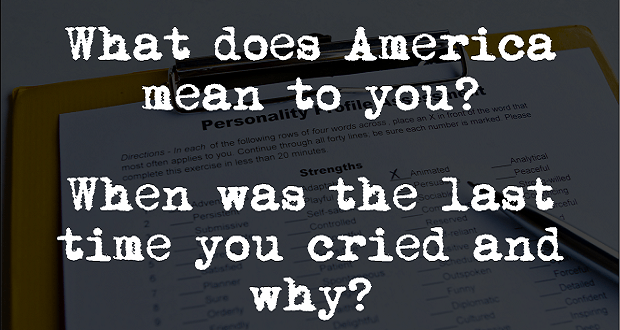
Attention, Human Resources! We need you! But first, allow me to digress…
As an undergraduate student, I knew that my professional aspirations lay in working with people. Naturally, this brought me to the field of Human Resources as a career choice. While researching graduate programs, I wanted to find myself at the intersection of human resources and diversity & inclusion (D&I) work. What I was not prepared to find was the lack of requisite courses around diversity, inclusion, and cultural competence within Human Resource Management programs across the nation. Though they did exist, they were certainly few and far between.
I believe this speaks to a competency that is still in some ways left out of the conversation when discussing the “successful” management of human capital. I found it very interesting that a profession intertwined with the well-being and professional success of human beings didn’t seem to prepare for the inevitable differences they present.
This may be a spoiler alert, but I ultimately did find a program that best suited my goals, and I now use what I have learned to contribute to The Winters Group’s overarching mission to create transformative, sustainable solutions for equity and inclusion. But the scarcity of D&I concepts in many HR programs means that students are often sent out into professional spaces equipped to manage human capital in some ways, while perhaps not as much in others.
The scarcity of D&I concepts in many HR programs means that students are often sent out into professional spaces equipped to manage human capital in some ways, while perhaps not as much in others. Share on XI must first emphasize that Human Resource professionals are incredible individuals. Time and time again, these organizational champions are tasked with people as their top priority, and they serve critical roles that often have them balancing the needs of the employees with the requirements of the organization. HR professionals constantly ensure that top talent is acquired, retained, developed and supported throughout the employee life cycle. Without them, the business couldn’t exist because the people ARE the business. But today, our need for HR has developed far past the aforementioned capacities.
At this point, the need is not just to make sure that all new hires are seamlessly onboarded or that benefits are processed properly and in a compliant manner. It isn’t solely to put out those proverbial fires that fall under employee relations, or to strategically advance the business by finding new and innovative ways to develop top talent (though these areas, and countless others, remain critical functions). At this point in time, Human Resource professionals are becoming newly engaged in the conversation around diversity, equity and inclusion in essential ways.
At this point in time, Human Resource professionals are becoming newly engaged in the conversation around diversity, equity & inclusion in essential ways. Share on XHR, we need you. While we understand that this work is not the sole responsibility of any one business unit, if there is any department that is positioned to keep the wheels turning, it is yours. Yes, if inclusion is not integrated into the organization as a whole, or is passed off as “just another HR initiative” it will not be impactful nor aide the business. All that understood, we rely upon our HR professionals to do what they do best and advocate via their roles—to ensure the success of the long-term appreciation and cultivation of inclusion within the workplace. I believe there are two critical areas in which immediate attention can be provided:
Policies & Procedures
The policies and procedures put in place by the organization are the structure that the organization sits upon. These documents are viewed as the ‘what’ and the ‘how’ of the organization, and guide how processes are handled internally. These are critical components to the culture of an organization, because those that join agree to comply with these guidelines. More importantly, these policies outline appropriate behavior and, in some cases, inadvertently suggest which identities are valued, and which are not. I encourage HR professionals to consider what traditional and/or “compliance-based” policies your organization has in place. As an example, are the observed company holidays inclusive of all faiths, or do they acknowledge certain belief systems over others?
I encourage HR professionals to consider what traditional and/or “compliance-based” policies your organization has in place. As an example, are the observed company holidays inclusive of all faiths? Share on XPeople
The workforce is constantly growing and changing. This means the way we serve the people within our organization should also be growing and changing. As previously mentioned, employees come from all different walks of life. They also spend roughly 40+ hours within the organization. That is a lot of time spent to not be valued for their true and authentic selves. This is why it is imperative that HR’s interactions with employees are taking place in a culturally competent manner. One size does not fit all in supporting human capital. No, I am not asking HR professionals to become D&I practitioners. I am suggesting that, as both the face of the organization and the advocate for the employee, we as HR foster our level of understanding around the different challenges experienced by employees, and actively consider the role of “diversity concepts,” like bias, cultural competence, and dimensions of diversity. Again, without people, there would be no organization, so we need to support them as best we can.
Rome wasn’t built in a day. Equity and inclusion aren’t achieved overnight. By no means am I suggesting an immediate organizational takeover demanding an overhaul of all policies. However, I am suggesting the following:
First, I urge Human Resource professionals to consider how your organization is supporting its employees—all of its employees.
Second, I encourage you to reflect on what drew you to Human Resources as a profession. You did in fact choose a profession that directly impacts many different people, in an environment where they spend a lot of their adult lives.
Third, I implore you to dig deep and determine how you may (start or continue) to be an advocate for the individuals that make up your organization. They need you.
Lastly, remember that supporting and advocating for the people within the organization IS supporting the organization—so continue to create and sustain meaningful change.


















